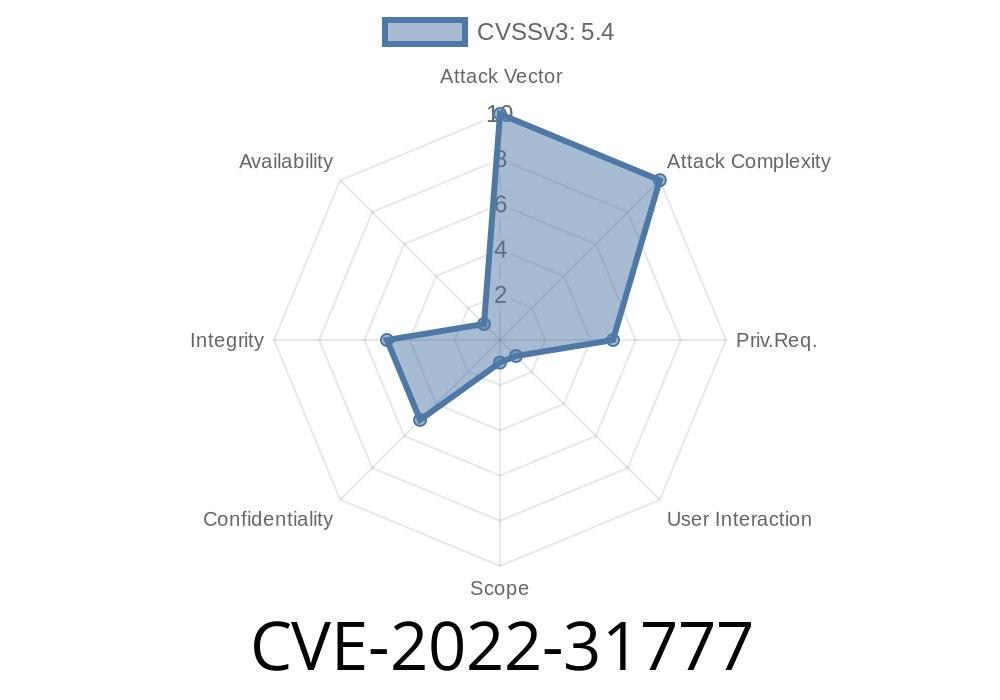A stored cross-site scripting (XSS) vulnerability (CVE-2022-31777) exists in Apache Spark 3.2.1 and earlier, as well as version 3.3.. This security flaw enables remote attackers to run arbitrary JavaScript code in a user's web browser when they access the Spark web UI. In this extensive post, we'll discuss the details of the exploit, provide code snippets as examples, and link to primary references that can assist you with further information. Whether you're a security researcher, developer, or Spark user, understanding the nuances of this vulnerability is crucial for maintaining a secure environment.
Exploit Details
The core of this vulnerability lies in the way Apache Spark handles logs relayed to users via its web UI. The attacker can inject malicious JavaScript payloads into the logs, which are then stored and not properly sanitized. When another user views these logs through the Apache Spark web UI, the malicious JavaScript code is executed in their web browser, resulting in a stored XSS attack.
Here's a simple example illustrating how the XSS vulnerability can be injected into the logs
# An attacker can run this command on a Spark cluster
spark-submit --master yarn <payload> my_application.py
In this case, <payload> can be a malicious JavaScript code snippet that will be injected into the task logs, such as:
<svg onload='alert("Your browser is now infected.")'>
When a user views these logs via the Spark web UI, their browser will display an alert saying, "Your browser is now infected."
Mitigation
If you are using a vulnerable version of Apache Spark (3.2.1 or earlier, or 3.3.), it's essential to apply the appropriate security patches as soon as possible. Moreover, ensure that your system is updated with the latest security features and restrictions. Alternatively, consider disabling access to the Spark web UI if it's not needed in your environment.
Additionally, Apache Spark has already released a patch for this vulnerability. You can find more information regarding mitigating this issue in the relevant Apache Spark security advisory: CVE-2022-31777 Apache Spark Advisory
References
For a deeper understanding of the CVE-2022-31777 vulnerability and related considerations, refer to the following primary sources:
1. Apache Spark security advisory - CVE-2022-31777 Stored XSS Vulnerability
2. CVE details - CVE-2022-31777 on CVE Details
3. NVD - CVE-2022-31777 on NVD
4. OWASP Top 10 Project - Stored XSS on OWASP.org
Conclusion
Stored XSS vulnerabilities such as CVE-2022-31777 pose significant risks to user safety and data security. It's essential to stay informed about these issues, especially when using popular technologies like Apache Spark. Stay tuned for updates regarding vulnerability patches and mitigation strategies employed by the community, and remember to update your Spark installation as required.
Timeline
Published on: 11/01/2022 16:15:00 UTC
Last modified on: 11/29/2022 17:58:00 UTC
